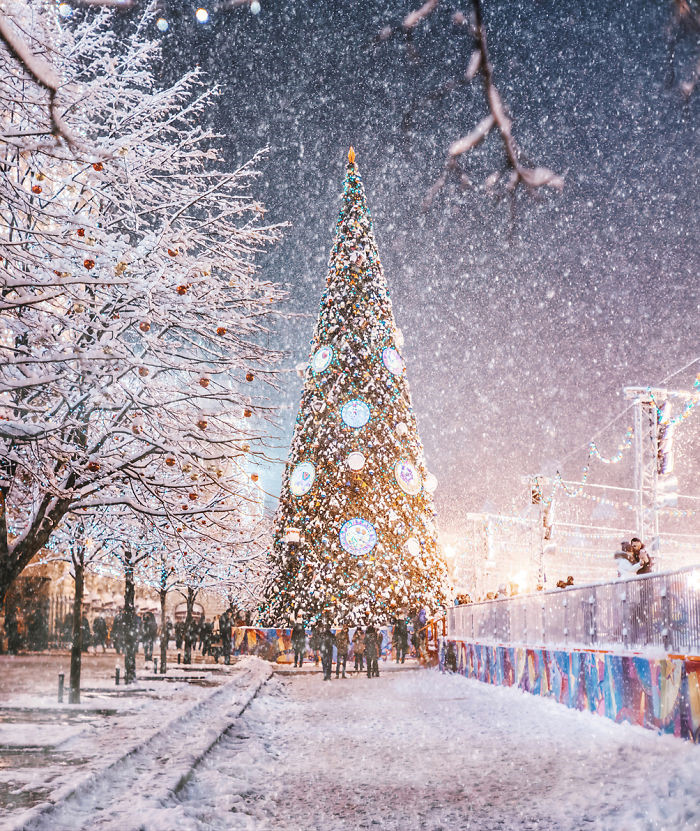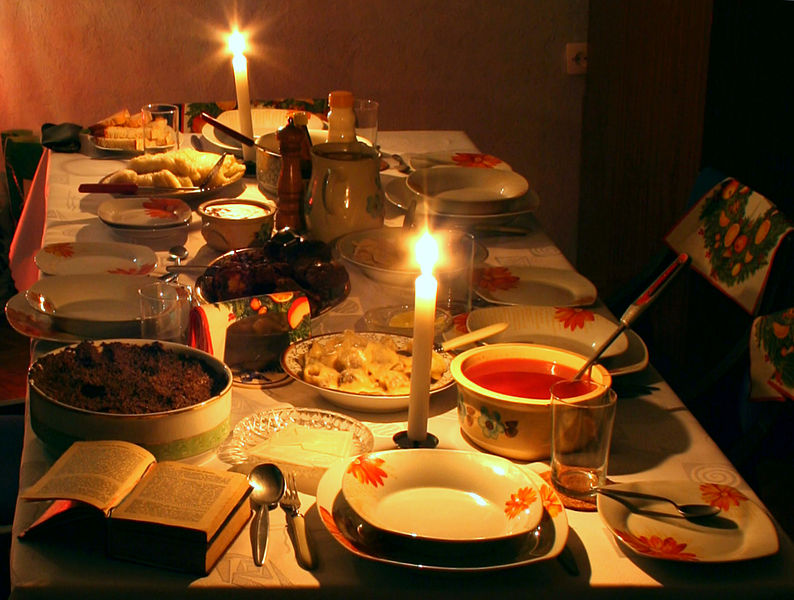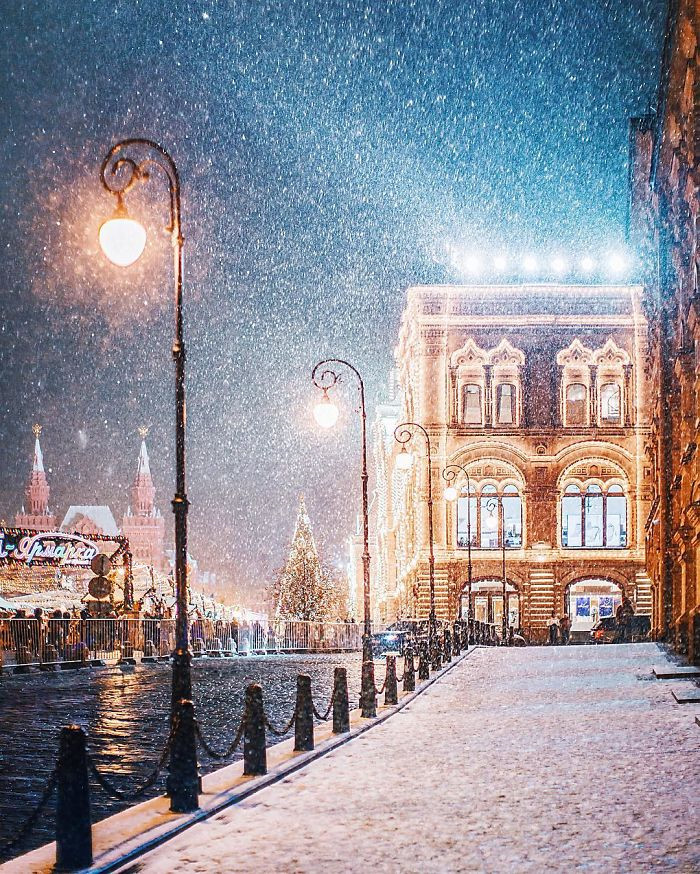In 1917, Christmas was banned throughout Russia. It wasn't until 1992 that the Christmas season was officially celebrated again throughout the former Soviet Union.

Sparkling Christmas scene in Moscow.
According to ancient customs, Christmas is usually celebrated by Russians for three days, January 7-8-9. On the first day, the wives must stay at home to clean the house and prepare 12 dishes for the table. This must include a dessert made from wheat or barley and raisins. The husbands will visit relatives, neighbors and acquaintances. People do not give each other gifts on this first day. On the second day, it is the wives' turn to go out and visit, while the husbands must stay at home.

Kutya is a dessert made from grain (wheat), raisins, honey and poppy seeds. According to Russian thinking, grain symbolizes hope, honey brings happiness, and seeds symbolize peace. Kutya is served together on the same plate to represent unity and harmony.
In Russia, Christmas Eve is traditionally celebrated with a variety of dishes, with the whole family gathered around the table. Some families even set aside a place for deceased family members.
Food at Christmas dinner varies from region to region, but the most traditional is still made up of 12 dishes symbolizing the 12 apostles of God.
1. Kutya
2. Pagach, is a large loaf of bread.
3. Zaprashka soup with onions, flour and mushrooms.
4. Garlic
5. Honey
6. Grilled cod or other fish.
7. Fresh or dried fruit.
8. Almonds.
9. Meat, rice and black beans.
10. Peas or lentils.
11. Soup cooked with potatoes.
12. Bobalki (Cook a little with seeds or cabbage)

To this day, these customs are still accepted by Orthodox Christians and most Russians as an occasion to welcome the New Year and express love and care to those around them.
Despite differences from many countries, Christmas is still one of the main holidays for Russian Orthodox Christians.
Some beautiful pictures of Christmas season in Russia






































